A fire so fierce it could not be fought
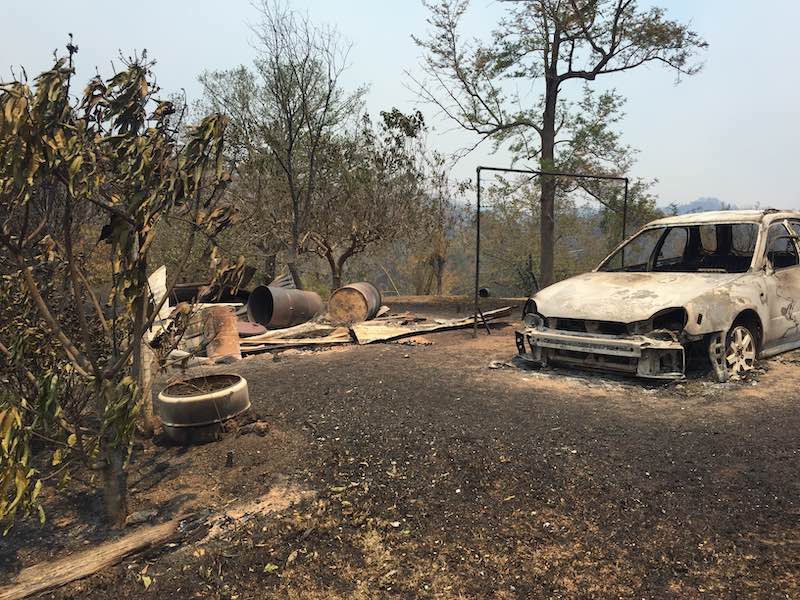
I am a mum, wife, water professional who works in local government, and a human. What is now referred to as "Black Summer" affected my family and I in ways we could never have imagined.
A fire raged through our property on the Mid-Coast of New South Wales in November 2019. This was a fire so fierce that it could not be fought. It swept through our valley so quickly that we had no choice but to evacuate, which we did with only moments to spare.
The road to recovery has been long, emotional and exhausting — and it is not over yet. This is my personal perspective of the bushfires and recovery, including what worked well, what didn’t and some advice for next time for government, the water industry, landholders and individuals.
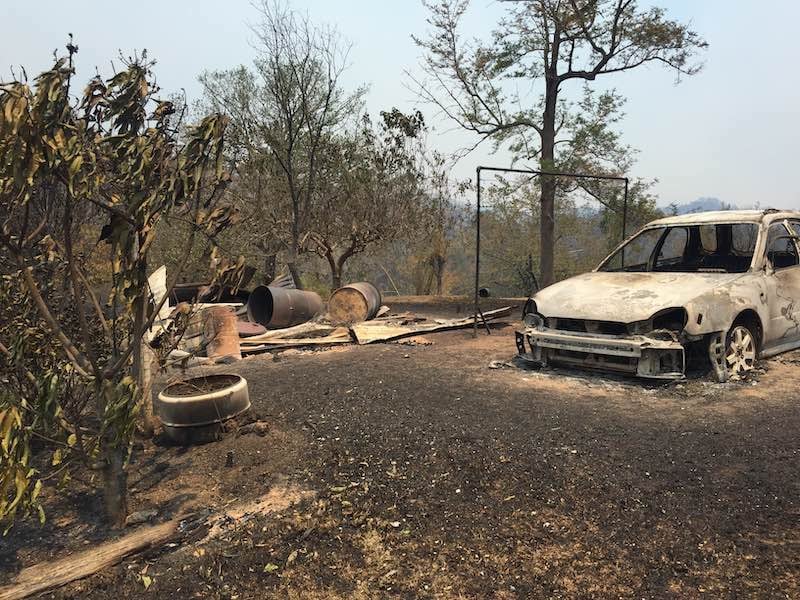 The impact on the Andersons garden shed
The impact on the Andersons garden shed
Recharging after disaster
As I gaze out the window at a landscape still badly scarred from last year’s fires, and feel the warmth that suggests the beginning of spring, I wonder; are we as individuals and the water industry better prepared than this time last year? Shawn Achor and Michelle Gielan wrote that resilience is not about how we endure, but how we recharge. So have we recharged sufficiently to cope if Black Summer repeated itself?
My family lives on a large property in the Mid-Coast region. The creek, which is part of the Manning catchment, is the life blood of the property, and it was completely dry for the first time in any local’s memory. The Manning River, which supplies more than 80,000 people in our community with drinking water stopped flowing and we recorded the longest ever continuous record for no extraction from the river. The Barrington, Karuah and Crawford Rivers, which supply some of our smaller towns, had ceased to flow.
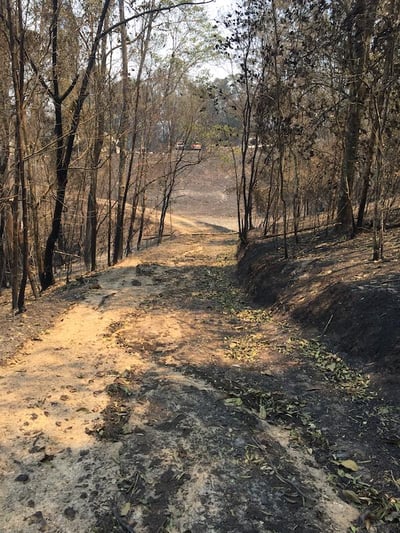 The driveway leading to the Andersons property
The driveway leading to the Andersons property
A fire that started by lightning strike had been burning for weeks up past our property in the state forest. We had a fire plan. Our essentials were packed. I would take the 4WD with the children on the safest route. My husband would stay and defend the property.
On a hot, windy November morning my husband and I put our son on the school bus. Our daughter was home with us.
The weather worsened and the fire spread quickly by ember drop. When it was time to evacuate, I said goodbye to my husband not knowing what I was leaving him to face. We were worried for each other and our daughter was scared. The fire was coming from the direction of the state forest, so, with hearts beating fast, we headed towards town. I was trying to reassure my daughter we would make it to safety, hoping that would be true.
As we travelled further, the fire burned on both sides of the road and it was not safe to continue. I turned around and headed back towards home. The smoke was so thick I couldn’t see very far in front of me. A neighbour told me he’d called 000 and to keep an eye out for the Rural Fire Service. My legs were shaking so much that I couldn’t get a grip on the clutch and almost stalled the car. I had to tell myself to breathe.
As soon as we arrived home, we made a new plan. We pushed our way out through an old access road at the other side of the property. This involved brute force, a chainsaw, 4WD and survival mode.
I had never been so scared in my life, but we had to keep it together for our daughter’s sake. I told her over and over that we would get through safely, while she squeezed my hand tightly and held her toy unicorn.
We made it out the other side and into a neighbouring village. We just had to hope that we had done enough to protect our property.
Surveying the aftermath
It was 24 hours before we could return safely. The whole valley was black. It looked like a scene out of an apocalyptic movie. We could see houses had been completely destroyed. We cleared trees to get to our property. It was almost unrecognisable.
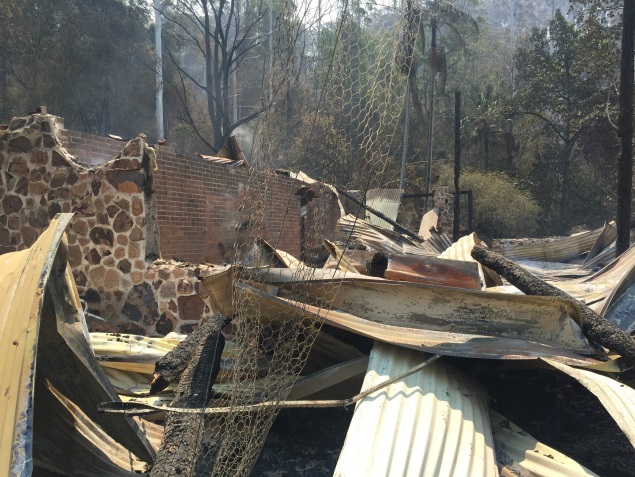 The Andersons machinery shed
The Andersons machinery shed
The first thing we saw was the machinery shed — or more accurately, the place where it once stood. It was now a pile of rubble. Then we saw the roof of our little house. It was still standing, among a sea of black. I cried with relief. How could our house have survived when everything else was gone?
We lost a lot that day. The main house on the property was gone, along with lifetimes of family memories. The machinery shed had tractors, tools, motorbikes, solar panels and years’ worth of farm equipment. Water tanks, garden sheds, citrus, avocado and macadamia trees, hundreds of acres of native forest and wildlife was burnt. Without water or electricity, it would be weeks before we could return home.
Eleven houses were lost in our valley. This left roughly 20 still standing.
The Mid-Coast responds
There were multiple fires still burning across the Mid-Coast region, with many homes and lives under threat. Across the region, 124 residences and 256 outbuildings were destroyed and 57 residences and 118 outbuildings were damaged. One life was lost.
If you ask a cross-section of government employees why they do the jobs they do, many of them will respond that they want to make a difference in people’s lives. This was the time to step up and prove it like never before.
The community looks to us for a sense of stability and direction during disasters. As essential service providers, our water and sewer operators kept working. Transport crews managed road closures to protect public safety. Staff worked alongside emergency response crews and assisted at evacuation centres. Teams from communications, information technology and many more worked around the clock, with some even sleeping in the offices to keep systems running.
The following week, some were still dealing with the threat, while others were assisting with recovery. It was critical to know what the community needed. Top of the list were: safe accommodation, water, food, caring for animals and access to properties. Responsibility was shared between council, the Office of Emergency Management and other agencies. Community groups formed and evolved and were a lifeline for many.
Due to the drought and fires, many rural communities now depended on town water supplies for household and livestock use. Tanks were destroyed in fires, creeks were dry and there was no rain on the horizon. Council trucks carted water to rural residencies that did not have access to water. Water stations were set up for community members to fill containers free of charge.
It took weeks for the threat to subside to anywhere near normal.
Lessons learned
Federal and state government
I lost track of the number of times we told our story in those first few months to be able to access assistance. If responsibility was designated to a single government agency to coordinate all methods of support, this process could be streamlined.
The clean-up was government funded, which was a huge relief. Knowing where to even begin the huge job of cleaning up can be overwhelming. As sites were cleared, people started to make plans to rebuild, and get on with their lives.
Local government
Local councils were not the leading agency for recovery, but did offer support, such as skip bins for metal, removing burnt vehicles, providing rate relief and fast-tracking development applications so people could rebuild.
Most people are surprisingly resilient during disasters, willing to do whatever needs to be done to continue to provide services to the community. However, even resilient people need support, especially for mental health.
Local communities and facilities need support. Community halls are important meeting places during disasters and are essential for the recovery phase. If local government supports these groups, they can in turn support locals. They are well placed to know who needs help and how to provide it.
The water industry
The water industry is great at collaborating and sharing experiences. I am proud to be part of an industry that has come together to support each other after these disasters.
NSW industry partners held a workshop at the time of the first flush of rain. Advice was provided relating to water quality risks in catchments, and how to manage them while still producing clean drinking water within Australian Drinking Water Guidelines.
There have been many other examples of this kind of assistance in the last few months, including the Bushfire Recovery Hackathon run by the Victorian Branch of Australian Water Association. This initiative developed practical solutions for recovery and advice for next time. This is a great resource for the water industry to call on now and in the future.
Rural communities need consideration when reviewing Integrated Water Cycle Management systems. At a time when resources were already stretched, the number of people dependent on the town water supply had suddenly grown.
Strategic planning needs to start early. Licences to extract water from new sources, such as bores, or Section 60 amendments and approvals for alternate uses of recycled water to reduce demand on drinking water, take considerable time.
Don’t stop planning for drought just because it has rained. Get these approvals in place for next time. Take time to review lessons learned and determine what worked well and what needs improvement. Turn these into actions and ensure they are effectively implemented.
Landholders and individuals
Hindsight is a wonderful thing. There are so many actions that help with preparation. Have a Plan A, Plan B and Plan C because circumstances change quickly. During the height of the disaster, survival mode kicks in and you need to know your options.
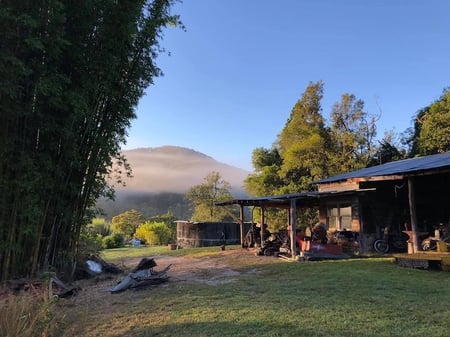 Before the fires
Before the fires
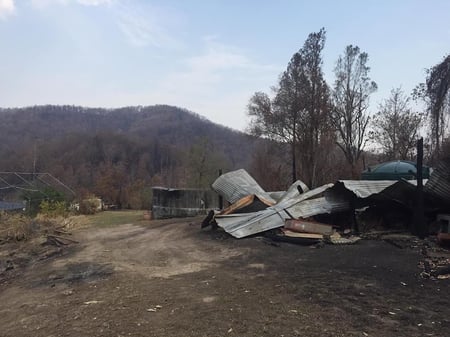 After the fires
After the fires
Are we better prepared?
So are we better prepared than this time last year? Absolutely!
The water industry is resourceful and adaptable. Learning from experience and planning for the future is part of what we do. As long as we give ourselves time to recharge and take on-board our lessons learned, next time we face a similar challenge, not only will we survive, but we may come out of it even stronger.
The weather has been more favourable this year. The first eight months have brought more than double the rainfall across the region than the whole of 2019. With predictions of La Niña conditions, we may find ourselves with the challenge of floods, rather than drought in the short term.
However, we will face challenges of intense drought and fires again. Maybe not next summer, but sometime in the future. Our climate is changing. Scientists predict that intense weather events will become more frequent. Decisions about how we choose to live today will affect the way we survive in the future.
Policies need to be holistic and consider climate change. Strategies should align with the Sustainable Development Goals developed by the United Nations.
We need to take care of the systems that keep us alive. What kind of a future do we want for our kids? For me, the most heartbreaking aspect of everything that happened that day in November is how it affected my kids. I live my life and make individual choices to reduce the risk of this happening again.

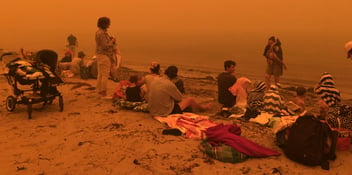

%20(1).jpg?width=352&name=20220407_145820%20(1)%20(1).jpg)